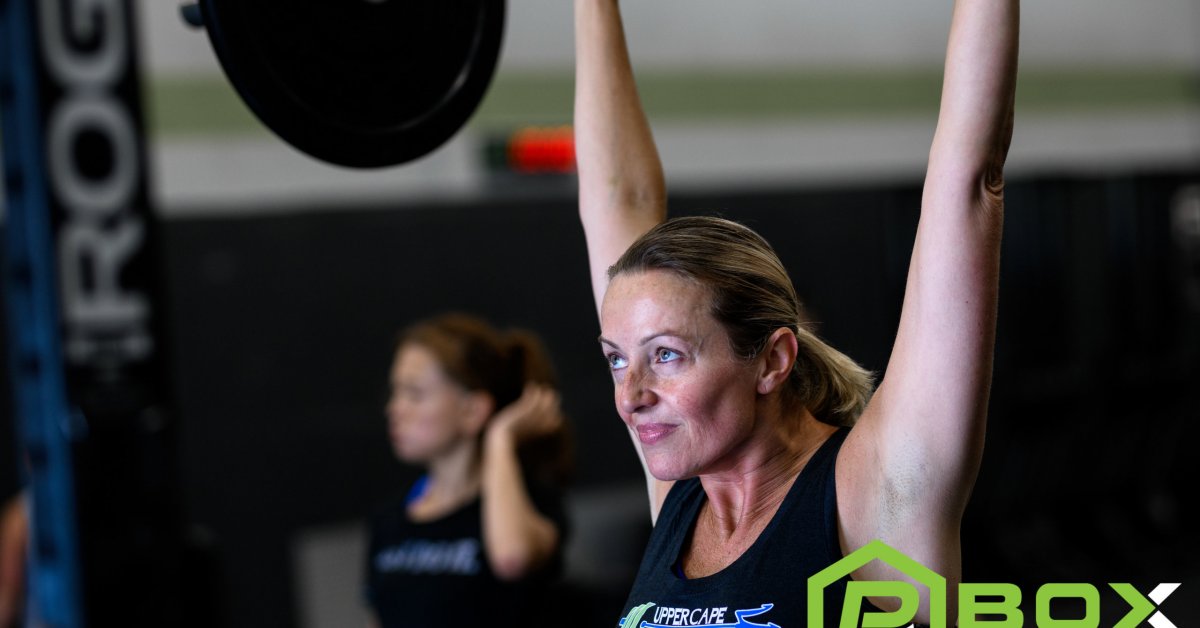In CrossFit, we often like to put people into a “bubble” in terms of their ability. Back in ’06 when I started posting on dot com people would write what scaling options they used or simply “Rx.”
Years later when we opened our Box, my wife and I came up with multiple levels for each workout that would sometimes include lower-level movement patterns, to ensure everyone was getting what they needed to be successful.
This worked quite well and is similar to what we use at BP today. Our goal is to help our clients make better decisions in terms of scaling and offer guidance.
These levels are not the “one size fits all” that many coaches would like them to be.
Part of the problem is that many CrossFit coaches have trouble looking at people as dynamic beings, and instead look at their clients in more of a linear fashion.
They ask questions like, “what are the determinants of where each person fits into each level?”
“Are there certain metrics that categorize people?”
No, there are not! Put simply, any level is intended to act as a guide; it’s nearly impossible to manipulate your clients to fit into one space, as there are ALWAYS exceptions to the rule.
Here’s an example:
Bobby is an ex-college football player and has a 275# power clean. He can squat, pull, and press with decent technique. He’s on week two of CrossFit classes and the workout “Isabel” pops up (30 snatches for time).
Now, Bobby has decent technique with his cleans and presses but has only performed power snatches a handful of times (many college football programs hardly ever use snatches in their programming).
Although he’s a strong kid, the coach on duty wants up him to use an empty barbell to simply practice technique for 30 repetitions.
In this situation, is having him muscle-snatch an empty barbell or even use a light load for 30 reps really in his best interest? Some would argue yes, but I’d have to disagree and say no.
A better option may be a lower-level conditioning piece that will still give him the same “feel” as Isabel. A better option may be something like:
AMRAP 5:
10 Burpees
10 Deadlifts with a moderate load.
Without going down the scaling rabbit hole, the goal should be to put your clients in the best position to stay safe, reach their goals, and get a good workout. Sounds pretty simple, right? Your clients are not linear creatures and require dynamic solutions to ensure they are getting what they need to be successful.
Mixing and Matching Levels
All of our programming comes with four Levels: Rx, L3, L2, L1. There are times when a particular workout may include “Rx+” in which the difficulty may increase in terms of a particular skill-set, loading, volume, or all of the above, and is intended to be utilized by your advanced athletes.
There may be times that there is a “Beginner Option” which entails a completely different workout (similar to what we suggested above with “Isabel”); a workout that is intended to coincide with our most green athletes’ lower levels of ability with higher-skill movement patterns.
To reiterate, these levels are a GUIDE, not an “end all be all.”
For instance, you may have an athlete like Bobby who is strong but has zero ability with gymnastics movements yet. A workout like:
4 RFT:
12 Hang Power Cleans (135, 95)
12 C2B Pull-ups
12 Front Squats (135, 95)
Bobby can handle the Rx loading, performing at least 3 out of the 4 rounds UB with the barbell movements, but does not know how to kip yet. He does, however, have strict pull-ups. In this case, opting for 5-6 Strict Pull-ups per round may be a viable option for him.
Are the cycle rate and level of intensity going to be the same had he been able to perform 12 butterfly C2B? No, definitely not, but he’s still getting a great workout that will more than likely challenge him quite a bit while staying within the given time parameters.
In this case, we actually went outside of the scaling and offered an additional solution based on our own discretion. If you’re considering your clients’ bio-individuality on the regular (as you should be), things like this should happen quite often.
In another scenario, we may have an athlete who is relatively new to group classes. This particular athlete was a college cross country athlete and has great aerobic qualities, but is just getting comfortable with barbell movements.
For the above workout, our “L1 Scaling” may look something like:
4 RFT:
12 Russian KBS (35, 25)
10 Ring Rows
8 Goblet Squats (35, 25)
In this particular scenario the athlete cannot perform a hang power clean efficiently yet, so including an option that takes into account movement patterns (hip-hinge, upper-pull, lower-push), logistics (1 Kettlebell, 1 set of rings), and appropriate levels of intensity (global, <8 minutes) is important to ensure proper safety, group management, and proper delivery of the intended programming.
The final scenario entails an athlete that has been doing CrossFit for four years, has a decent ability with all things CrossFit, but their weaknesses entail anything kipping and double unders. A workout like:
AMRAP 12:
30 Double Unders
20 Thrusters (75, 55)
10 T2B
The thruster Rx weight is not an issue for this athlete but they have to perform the “L1 version” for the Double Unders (30 Single Unders) and T2B (10 Abmat Sit-ups).
This is perfectly okay, if the intent of the workout stays intact. Some may argue that this athlete should be “forced” to get better at double unders and T2B, but really the question is why?
Your clients are adults. If they don’t want to spend time getting better at the things they suck at, that’s their problem, not yours. Remember, 99% of your clients come to your facility to look and feel better and not have to think for an hour out of their day.
Some will take CrossFit more seriously than others, while others may never give two shits if they ever do a double under or a T2B. The big picture is ensuring that your clients are reaching THEIR goals.
Scaling recap
- It’s not prudent to try to put people into categories as EVERYONE has varying levels of ability
- Mixing and matching scaling levels is okay if the desired stimulus stays intact
- Thinking outside of the box is a must to ensure your athletes are getting the most from the programming and staying safe
- Focus on your clients’ goals, not yours, and know their goals may not involve anything CrossFit related
Pulling it all together
As coaches, we want the best for our clients. We want our clients to turn ALL weaknesses into strengths, but remember it’s really not about that; it’s about getting our clients closer to their goals, which may be completely separate from getting better at CrossFit.
Take your ego out of the equation in terms of thinking all your clients need to be ninjas and focus on what is really important. In the same token, don’t forget people are NOT linear; they are dynamic beings that require thought. No one needs to be put into a scaling box.
Being a great coach is about more than just helping someone get better at their clean and jerk or handstand kick-up. It’s about being able to put people into the right positions while using the correct discretion in terms of scaling, even if it’s NOT what’s written on the whiteboard.



